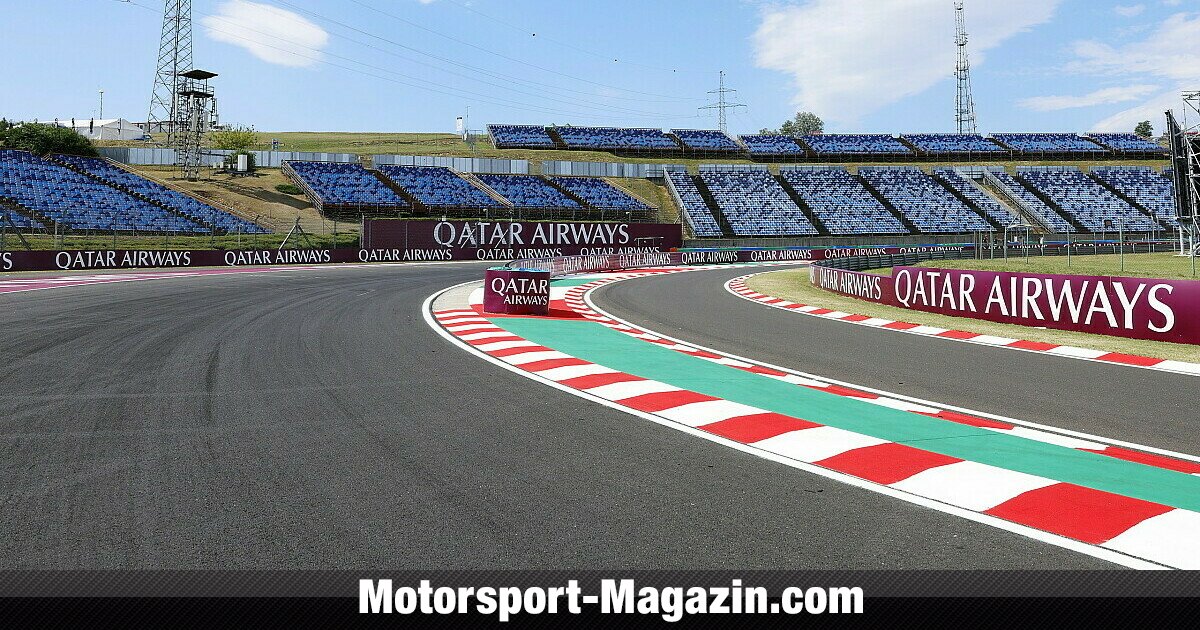The first phase of the major renovation at the Hungaroring has been completed. Over the last five months, work has been in full swing on the track north of Budapest in order to be able to present Formula 1 and its fans with an improved venue for the Hungarian Grand Prix (21 July). In the first phase of the project, which is scheduled to last until 2026, the paddock and the fan zone were redesigned.
In order to complete phase one in time for the race, work on the track was often carried out 24 hours a day. 400 to 500 workers were employed on the construction site at the same time. In total, around 1,500 people are involved in the project, which is intended to make the Hungaroring fit for the future.
“The pace of the work was astonishing,” enthuses Zsolt Gyulay, President and CEO of the Hungaroring. “The track has changed from week to week. Anyone coming to the Hungarian Grand Prix will see that the reconstruction process has begun and has brought spectacular changes.”
The project is intended to prepare for the fact that an F1 GP is no longer just a race, but has become a festival. “I have been saying for years that in the new era, needs have changed,” said Gyulay. “The business world around F1 has changed and today Formula 1 races are seen as a four-day festival and the race tracks have to adapt to meet these needs.”
Tunnel, paddock, etc. – Everything new at the Hungaroring
In Hungary, two tunnels have already been placed under the finish line, 390 kilometers of pipeline have been laid, 32,000 cubic meters of concrete have been used and retaining walls have been built behind the grandstands. The buildings on the lower depot area of the race track have been demolished to make way for the new paddock, which now covers 8,000 square meters.
In addition, in the first phase of the reconstruction, a significant part of the final supply network was completed and parts of the route were resurfaced. According to Press release from the Hungaroring In addition, “spectacular landscaping work was carried out to ensure that the Hungarian Grand Prix can be hosted in an appropriate and attractive environment.”
“I am pleased that we have taken the first step,” says Gyulay. “The smallest paddock in the world championship series has been made wider, the two tunnels have been built, the finish straight has been resurfaced and the area behind the grandstand has also undergone a spectacular transformation. There are no abandoned buildings or construction sites in this area, which is very important to enable clean television coverage.”
The first phase of the major Hungaroring reconstruction was completed on May 22nd and appears to have met expectations. “FOM officials recently visited us and according to their feedback, they were satisfied with what they saw,” says Gyulay happily. After the Hungarian GP, construction work will resume and is scheduled to last until 2026. The circuit, which has been on the F1 calendar since 1986, will thus be further adapted to the needs of modern Formula 1 in order to secure a long future as a venue.
It’s not just the Hungaroring that’s seeing changes. Temporary modifications to the Red Bull Ring are intended to solve the track limit dilemma at the Austrian GP. You can find out all about it here: Modifications to the Red Bull Ring: Formula 1’s track limit dilemma solved at the Austrian GP?
